Co-Injection of Foam and Particles: An Approach for Bottom Water Control in Fractured-Vuggy Reservoirs
Abstract
:1. Introduction
2. Experimental Work
2.1. Materials
2.2. Experimental Setup
2.3. Foam Performance
2.3.1. Rheological Property Testing of Foams
2.3.2. Experiments on Static Settling of Particles
2.4. Experiments on Oil Displacement
3. Results and Discussion
3.1. Impact of Foam Quality on Foam Rheological Characteristics
3.2. Effect of Particles on Foam Properties
3.2.1. Effect of Particles on the Rheological Properties of Foams
3.2.2. Static Particle Settling Experiments in Foam System
3.3. Study on the Displacement Effect of Different Fluids in Fractured-Vuggy Reservoirs
3.3.1. Water Driving
3.3.2. Foam Flooding
3.3.3. Co-Injection of Foam and Particles
4. Conclusions
Author Contributions
Funding
Data Availability Statement
Acknowledgments
Conflicts of Interest
References
- Kjärstad, J.; Johnsson, F. Resources and future supply of oil. Energy Policy 2009, 37, 441–464. [Google Scholar] [CrossRef]
- Jiao, F. Practice and knowledge of volumetric development of deep fractured-vuggy carbonate reservoirs in Tarim Basin, NW China. Pet. Explor. Dev. 2019, 46, 576–582. [Google Scholar] [CrossRef]
- Wang, J.; Zhang, T.; Liu, H.; Dong, X.; Li, X.; Yang, M.; Liu, H.; Hu, G.; Sepehrnoori, K. A Novel Method of Constructing Spatial Well Pattern for Water Flooding in Fractured-Vuggy Carbonate Reservoirs FVCRs. In Proceedings of the SPE Annual Technical Conference and Exhibition, Dubai, United Arab Emirates, 22 September 2021. SPE-206017-MS. [Google Scholar]
- Rong, Y.; Zhao, J.; Lu, X.; Li, X.; Li, X. Remaining oil distribution patterns and potential-tapping countermeasures in carbonate fracture-cavity reservoir. Acta Pet. Sin. 2014, 35, 1138. [Google Scholar]
- Nordqvist, A.W.; Tsang, Y.W.; Tsang, C.F.; Dverstorp, B.; Andersson, J. A variable aperture fracture network model for flow and transport in fractured rocks. Water Resour. Res. 1992, 28, 1703–1713. [Google Scholar] [CrossRef]
- Hearn, C.; Ebanks, W., Jr.; Tye, R.; Ranganathan, V.J. Geological factors influencing reservoir performance of the Hartzog Draw Field, Wyoming. J. Pet. Technol. 1984, 36, 1335–1344. [Google Scholar] [CrossRef]
- Zhang, S.; Jin, Q.; Hu, M.; Han, Q.; Sun, J.; Cheng, F.; Zhang, X. Differential structure of Ordovician karst zone and hydrocarbon enrichment in paleogeomorphic units in Tahe area, Tarim Basin, NW China. Pet. Explor. Dev. 2021, 48, 1113–1125. [Google Scholar] [CrossRef]
- Wang, J.; Pang, Y.; Cao, Y.C. Formation mechanism and significance of Cambrian carbonate fault-controlled karst reservoir in Shihuiyao outcrop area, Tarim Basin. J. China Univ. Pet. Ed. Nat. Sci. 2021, 45, 1–12. [Google Scholar]
- Wang, J.; Liu, H.; Ning, Z.; Zhang, H.; Hong, C. Experiments on water flooding in fractured-vuggy cells in fractured-vuggy reservoirs. Pet. Explor. Dev. 2014, 41, 74–81. [Google Scholar] [CrossRef]
- Hou, J.; Luo, M.; Zhu, D. Foam-EOR method in fractured-vuggy carbonate reservoirs: Mechanism analysis and injection parameter study. J. Pet. Sci. Eng. 2018, 164, 546–558. [Google Scholar] [CrossRef]
- Tariq, Z.; Alnuaim, S.; Abdulraheem, A.; Khan, M.R. New Methodology to quantify productivity of vertical wells in naturally fractured solution gas drive reservoirs with dual porosity and dual permeability. In Proceedings of the SPE/PAPG Pakistan Section Annual Technical Conference, Islamabad, Pakistan, 21–23 November 2016. SPE-185314-MS. [Google Scholar]
- Ebadati, A.; Akbari, E.; Davarpanah, A. An experimental study of alternative hot water alternating gas injection in a fractured model. Energy Explor. Exploit. 2019, 37, 945–959. [Google Scholar] [CrossRef]
- Qu, M.; Hou, J.; Wen, Y.; Liang, T. Nitrogen gas channeling characteristics in fracture-vuggy carbonate reservoirs. J. Pet. Sci. Eng. 2020, 186, 106723. [Google Scholar] [CrossRef]
- Khosravi, M.; Bahramian, A.; Emadi, M.; Rostami, B.; Roayaie, E. Mechanistic investigation of bypassed-oil recovery during CO2 injection in matrix and fracture. Fuel 2014, 117, 43–49. [Google Scholar] [CrossRef]
- Fernø, M.; Eide, Ø.; Steinsbø, M.; Langlo, S.; Christophersen, A.; Skibenes, A.; Ydstebø, T.; Graue, A. Mobility control during CO2 EOR in fractured carbonates using foam: Laboratory evaluation and numerical simulations. J. Pet. Sci. Eng. 2015, 135, 442–451. [Google Scholar] [CrossRef]
- Valencia, J.D.; Ocampo, A.; Mejía, J.M. Development and validation of a new model for in situ foam generation using foamer droplets injection. Transp. Porous Media 2020, 131, 251–268. [Google Scholar] [CrossRef]
- Ferno, M.A.; Gauteplass, J.; Pancharoen, M.; Haugen, A.; Graue, A.; Kovscek, A.R.; Hirasaki, G.J. Experimental study of foam generation, sweep efficiency, and flow in a fracture network. SPE J. 2016, 21, 1140–1150. [Google Scholar] [CrossRef]
- Gandomkar, A.; Kharrat, R.; Motealleh, M.; Khanamiri, H.H.; Nematzadeh, M.; Ghazanfari, M.H. An experimental investigation of foam for gas mobility control in a low-temperature fractured carbonate reservoir. Pet. Sci. Technol. 2012, 30, 976–985. [Google Scholar] [CrossRef]
- AlQuaimi, B.; Rossen, W. Characterizing foam flow in fractures for enhanced oil recovery. In Proceedings of the IOR 2017-19th European Symposium on Improved Oil Recovery, Stavanger, Norway, 24–27 April 2017; European Association of Geoscientists & Engineers: Utrecht, The Netherlands, 2017; pp. 1–16. [Google Scholar]
- Eide, Ø.; Fernø, M.A.; Alcorn, Z.; Graue, A. Visualization of carbon dioxide enhanced oil recovery by diffusion in fractured chalk. SPE J. 2016, 21, 112–120. [Google Scholar] [CrossRef]
- Rossen, W.R. Foams in enhanced oil recovery. In Foams; Routledge: London, UK, 2017; pp. 413–464. [Google Scholar]
- Clampitt, R. Selective Plugging of Formations with Foam. U.S. Patent No. 3,993,133, 23 November 1976. [Google Scholar]
- Abrams, A. Mud design to minimize rock impairment due to particle invasion. J. Pet. Technol. 1977, 29, 586–592. [Google Scholar] [CrossRef]
- Pu, X.; Luo, X.; Luo, P. The pressure bearing capacity of leakage layer of Luohe Formation in Changqing Oilfield is improved by shielding bridge plugging technology. J. Southwest. Pet. Inst. 1995, 2, 78–84. [Google Scholar]
- Rafati, R.; Haddad, A.S.; Hamidi, H. Experimental study on stability and rheological properties of aqueous foam in the presence of reservoir natural solid particles. Colloids Surf. A Physicochem. Eng. Asp. 2016, 509, 19–31. [Google Scholar] [CrossRef]
- Wang, T.; Fan, H.; Yang, W.; Meng, Z. Stabilization mechanism of fly ash three-phase foam and its sealing capacity on fractured reservoirs. Fuel 2020, 264, 116832. [Google Scholar] [CrossRef]
- Gaurina-Međimurec, N.; Brkić, V.; Topolovec, M.; Mijić, P. Fracturing fluids and their application in the republic of croatia. Appl. Sci. 2021, 11, 2807. [Google Scholar] [CrossRef]
- Chieng, Z.H.; Mohyaldinn, M.E.; Hassan, A.M.; Bruining, H. Experimental investigation and performance evaluation of modified viscoelastic surfactant (ves) as a new thickening fracturing fluid. Polymers 2020, 12, 1470. [Google Scholar] [CrossRef] [PubMed]
- Tong, S.; Gu, M.; Singh, R.; Mohanty, K.K. Proppant transport in foam fracturing fluid during hydraulic fracturing. J. Pet. Sci. Eng. 2019, 182, 106279. [Google Scholar] [CrossRef]
- Yekeen, N.; Padmanabhan, E.; Idris, A.K. A review of recent advances in foam-based fracturing fluid application in unconventional reservoirs. J. Ind. Eng. Chem. 2018, 66, 45–71. [Google Scholar] [CrossRef]
- Elturki, M.; McElroy, P.D.; Li, D.; Kablan, A.; Shaglouf, H. Simulation Study Investigating the Impact of Carbon Dioxide Foam Fracturing Fluids on Proppant Transport. In Proceedings of the SPE Trinidad and Tobago Section Energy Resources Conference, Virtual, 28–30 June 2021. D011S3R03. [Google Scholar]
- Rahmani, O. Mobility control in carbon dioxide-enhanced oil recovery process using nanoparticle-stabilized foam for carbonate reservoirs. Colloids Surf. A Physicochem. Eng. Asp. 2018, 550, 245–255. [Google Scholar] [CrossRef]
- Singh, R.; Mohanty, K.K. Foam flow in a layered, heterogeneous porous medium: A visualization study. Fuel 2017, 197, 58–69. [Google Scholar] [CrossRef]
- Jie, C.K.; Jaafar, M.Z.; Sulaiman, W.R.W. Foam stability performance enhanced with rice husk ash nanoparticles. J. Teknol. 2019, 81, 87–96. [Google Scholar]
- Eftekhari, A.A.; Krastev, R.; Farajzadeh, R. Foam stabilized by fly ash nanoparticles for enhancing oil recovery. Ind. Eng. Chem. Res. 2015, 54, 12482–12491. [Google Scholar] [CrossRef]
- Dong, C.; Zhou, Y.; Chen, Q.; Zhu, C.; Li, Y.; Li, X.; Liu, Y. Effects of fluid flow rate and viscosity on gravel-pack plugging and the optimization of sand-control wells production. Pet. Explor. Dev. 2019, 46, 1251–1259. [Google Scholar] [CrossRef]
- Dai, Z.; Liu, Y.; Zou, X. Experimental evaluation of water drive effect of ceramic filling in fractured reef limestone reservoirs. Petrochem. Appl. 2023, 42, 23–28+48. [Google Scholar]
- Hu, A.; Li, K.; Feng, Y.; Fu, H.; Zhong, Y. Laboratory Evaluation and Field Application of a Gas-Soluble Plugging Agent: Development of Bottom Water Plugging Fracturing Technology. Energies 2022, 15, 6761. [Google Scholar] [CrossRef]
- Wang, M.; Yang, S.; Li, M.; Wang, S.; Yu, P.; Zhang, Y.; Chen, H. Influence of heterogeneity on nitrogen foam flooding in low-permeability light oil reservoirs. Energy Fuels 2021, 35, 4296–4312. [Google Scholar] [CrossRef]
- Xu, Z.; Li, B.; Zhao, H.; He, L.; Liu, Z.; Chen, D.; Yang, H.; Li, Z. Investigation of the effect of nanoparticle-stabilized foam on eor: Nitrogen foam and methane foam. ACS Omega 2020, 5, 19092–19103. [Google Scholar] [CrossRef] [PubMed]
- Liu, P.; Zhang, X.; Wu, Y.; Li, X. Enhanced oil recovery by air-foam flooding system in tight oil reservoirs: Study on the profile-controlling mechanisms. J. Pet. Sci. Eng. 2017, 150, 208–216. [Google Scholar] [CrossRef]
- Wang, Z.; Cao, Z.; Li, S.; Li, S. Investigation of the plugging capacity and enhanced oil recovery of flexible particle three-phase foam. J. Mol. Liq. 2023, 386, 122459. [Google Scholar] [CrossRef]
- Xu, Z.; Li, Z.; Liu, Z.; Li, B.; Zhang, Q.; Zheng, L.; Song, Y.; Husein, M.M. Characteristics of CO2 foam plugging and migration: Implications for geological carbon storage and utilization in fractured reservoirs. Sep. Purif. Technol. 2022, 294, 121190. [Google Scholar] [CrossRef]
- Zhang, Y.; Zhang, L.; Wang, Y.; Wang, M.; Wang, Y.; Ren, S. Dissolution of surfactants in supercritical CO2 with co-solvents. Chem. Eng. Res. Des. 2015, 94, 624–631. [Google Scholar] [CrossRef]
- Wang, Z.H.; Liu, X.Y.; Zhang, H.Q.; Wang, Y.; Xu, Y.F.; Peng, B.L.; Liu, Y. Modeling of kinetic characteristics of alkaline-surfactant-polymer-strengthened foams decay under ultrasonic standing wave. Pet. Sci. 2022, 19, 1825–1839. [Google Scholar] [CrossRef]
- Li, B.-F.; Zhang, M.-Y.; Li, Z.-M.; Kovscek, A.; Xin, Y.; Li, B.-L. Flow characteristics and regime transition of aqueous foams in porous media over a wide range of quality, velocity, and surfactant concentration. Pet. Sci. 2023, 20, 1044–1052. [Google Scholar] [CrossRef]
- Chen, Y.; Xu, C.; Huang, J.; Wu, D.; Lv, Q. Rheological properties of nanocrystalline cellulose suspensions. Carbohydr. Polym. 2017, 157, 303–310. [Google Scholar] [CrossRef]
- Barati, N.; Zargartalebi, M.; Kharrat, R. Rheological behavior of nanosilica suspensions and the potential to enhance polymer flooding performance. Spec. Top. Rev. Porous Media Int. J. 2013, 4, 327–337. [Google Scholar] [CrossRef]
- Edy, I.K.O.; Saasen, A.; Hodne, H. Rheological properties of fracturing fluids. Nord. Rheol. Soc. 2011, 19. [Google Scholar]
- Luo, X.; Wang, S.; Wang, Z.; Jing, Z.; Lv, M. Experimental research on rheological properties and proppant transport performance of GRF–CO2 fracturing fluid. J. Pet. Sci. Eng. 2014, 120, 154–162. [Google Scholar] [CrossRef]
- Ba Geri, M.; Imqam, A.; Bogdan, A.; Shen, L. Investigate the rheological behavior of high viscosity friction reducer fracture fluid and its impact on proppant static settling velocity. In Proceedings of the SPE Oklahoma City Oil and Gas Symposium/Production and Operations Symposium, Oklahoma City, OK, USA, 9–10 April 2019. D021S04R03. [Google Scholar]
- Ba Geri, M.; Imqam, A.; Shen, L.; Bogdan, A.; Flori, R. Static Proppant Settling Velocity Characteristics in High Viscosity Friction Reducers Fluids for Unconfined and Confined Fractures. In Proceedings of the ARMA US Rock Mechanics/Geomechanics Symposium, New York City, NY, USA, 23–26 June 2019. ARMA-2019-0381. [Google Scholar]
- Zhong, H.; He, Y.; Yang, E.; Bi, Y.; Yang, T. Modeling of microflow during viscoelastic polymer flooding in heterogenous reservoirs of Daqing Oilfield. J. Pet. Sci. Eng. 2022, 210, 110091. [Google Scholar] [CrossRef]
- Hou, J.R.; Zheng, Z.Y.; Song, Z.J.; Luo, M.; Li, H.B.; Zhang, L.; Yuan, D.Y. Three-dimensional physical simulation and optimization of water injection of a multi-well fractured-vuggy unit. Pet. Sci. 2016, 13, 259–271. [Google Scholar] [CrossRef]
- El Din, S.S.; Dernaika, M.; Hannon, L.; Kalam, Z. The Effect of Rock Properties on Remaining and Residual Oil Saturation in Heterogeneous Carbonate Rocks. In Proceedings of the SPE Middle East Oil and Gas Show and Conference, Society of Petroleum Engineers, Manama, Bahrain, 10–13 March 2013. [Google Scholar] [CrossRef]
- Fredriksen, S.B.; Alcorn, Z.P.; Frøland, A.; Viken, A.; Rognmo, A.U.; Seland, J.G.; Ersland, G.; Fernø, M.A.; Graue, A. Surfactant prefloods during carbon dioxide foam injection for integrated enhanced oil recovery in fractured oil-wet carbonates. SPE J. 2019, 24, 1139–1153. [Google Scholar] [CrossRef]
- Chevallier, E.; Chabert, M.; Gautier, S.; Ghafram, H.; Khaburi, S.; Alkindi, A. Design of a combined foam eor process for a naturally fractured reservoir. In Proceedings of the SPE EOR Conference at Oil and Gas West Asia, Muscat, Oman, 26–28 March 2018. D031S18R02. [Google Scholar]
- Wang, K.; Wang, G.; Lu, C.; Pei, C.; Wang, Y. Preparation and investigation of foaming amphiphilic fluorinated nanoparticles for enhanced oil recovery. Materials 2017, 10, 1403. [Google Scholar] [CrossRef] [PubMed]
- Phong, G.M.; Pilus, R.M.; Mustaffa, A.; Thangavel, L.; Mohamed, N.M. Relationship between fly ash nanoparticle-stabilized-foam and oil production in core displacement and simulation studies. Fuel 2020, 266, 117033. [Google Scholar] [CrossRef]

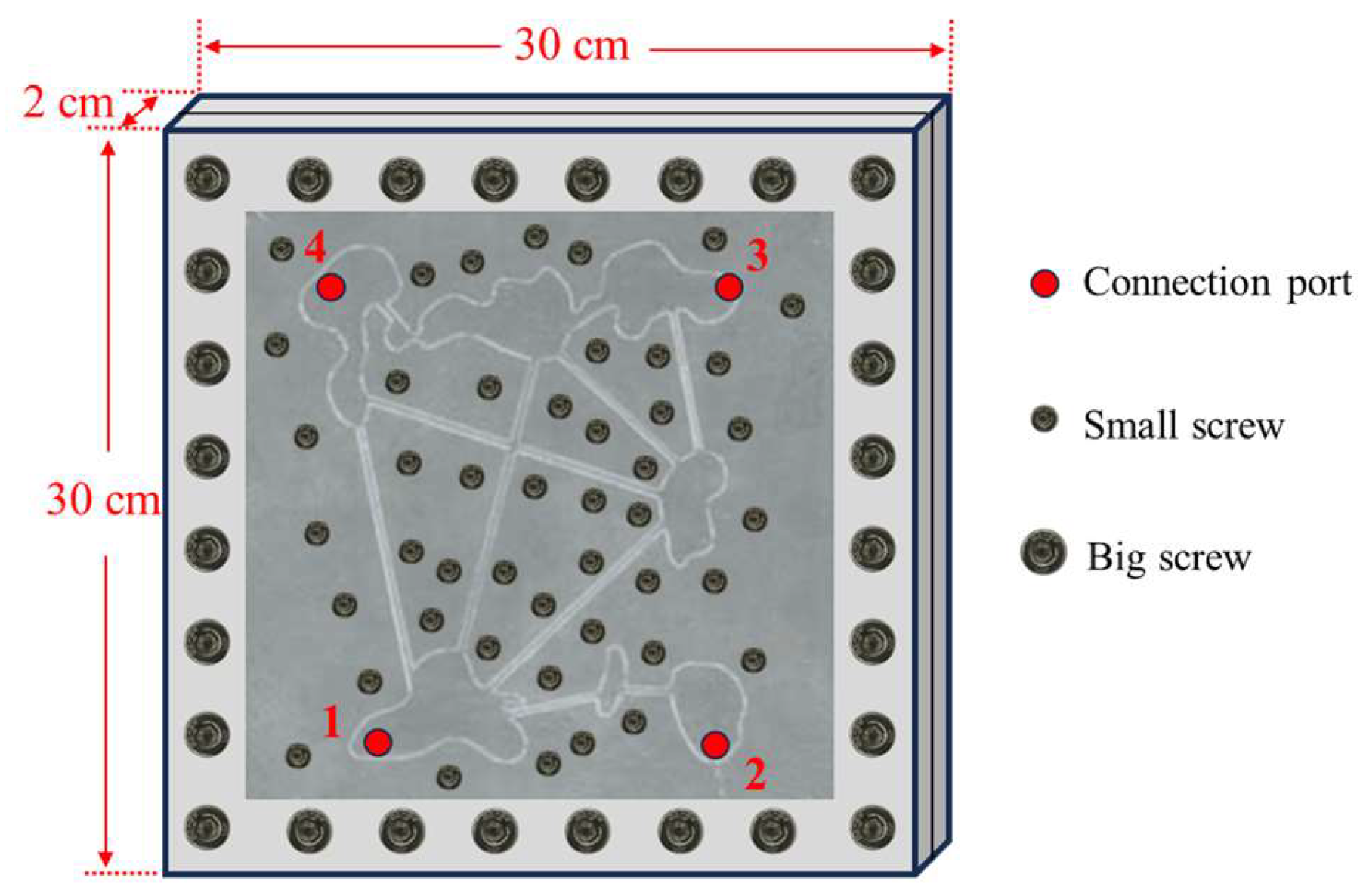
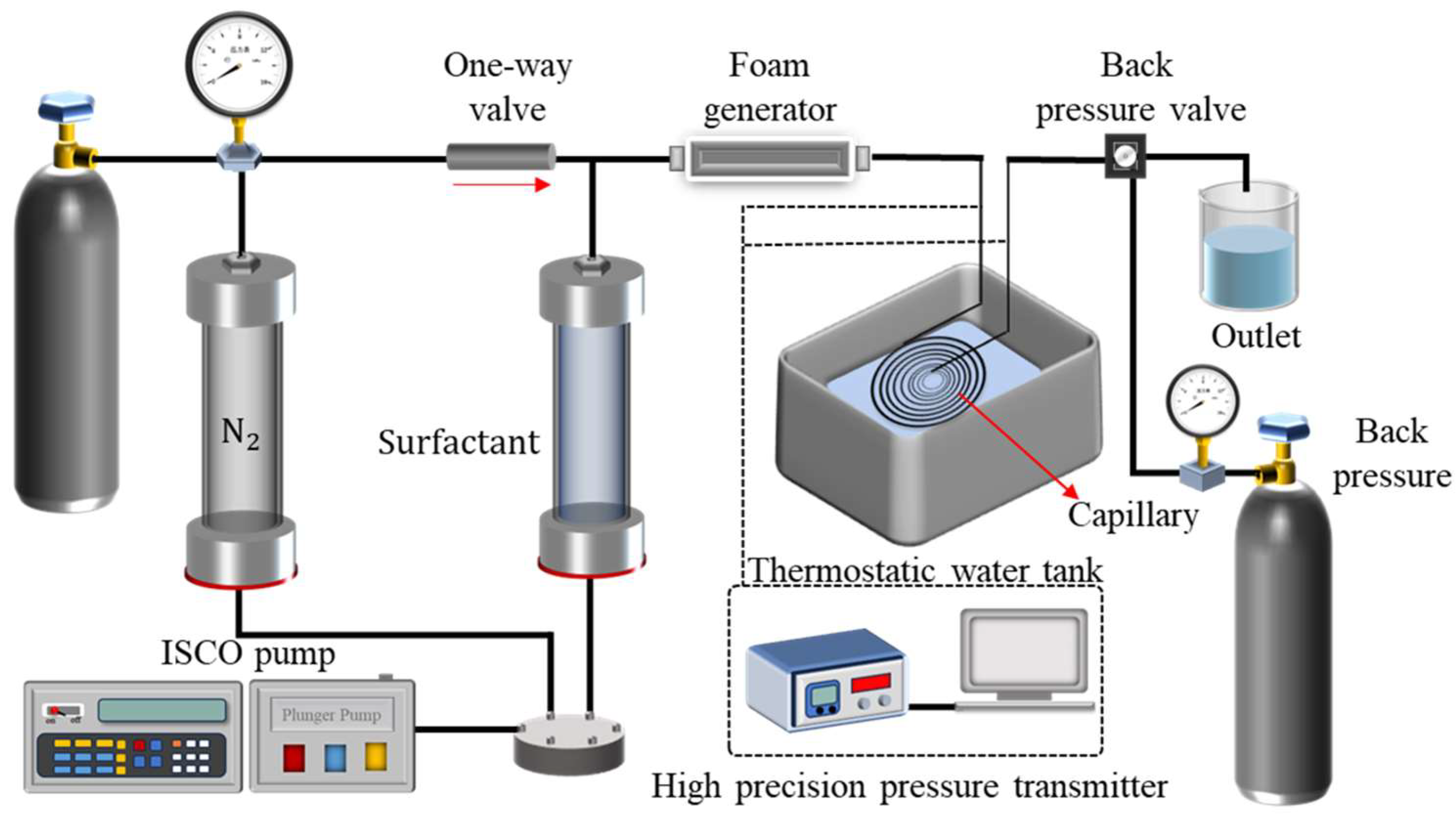
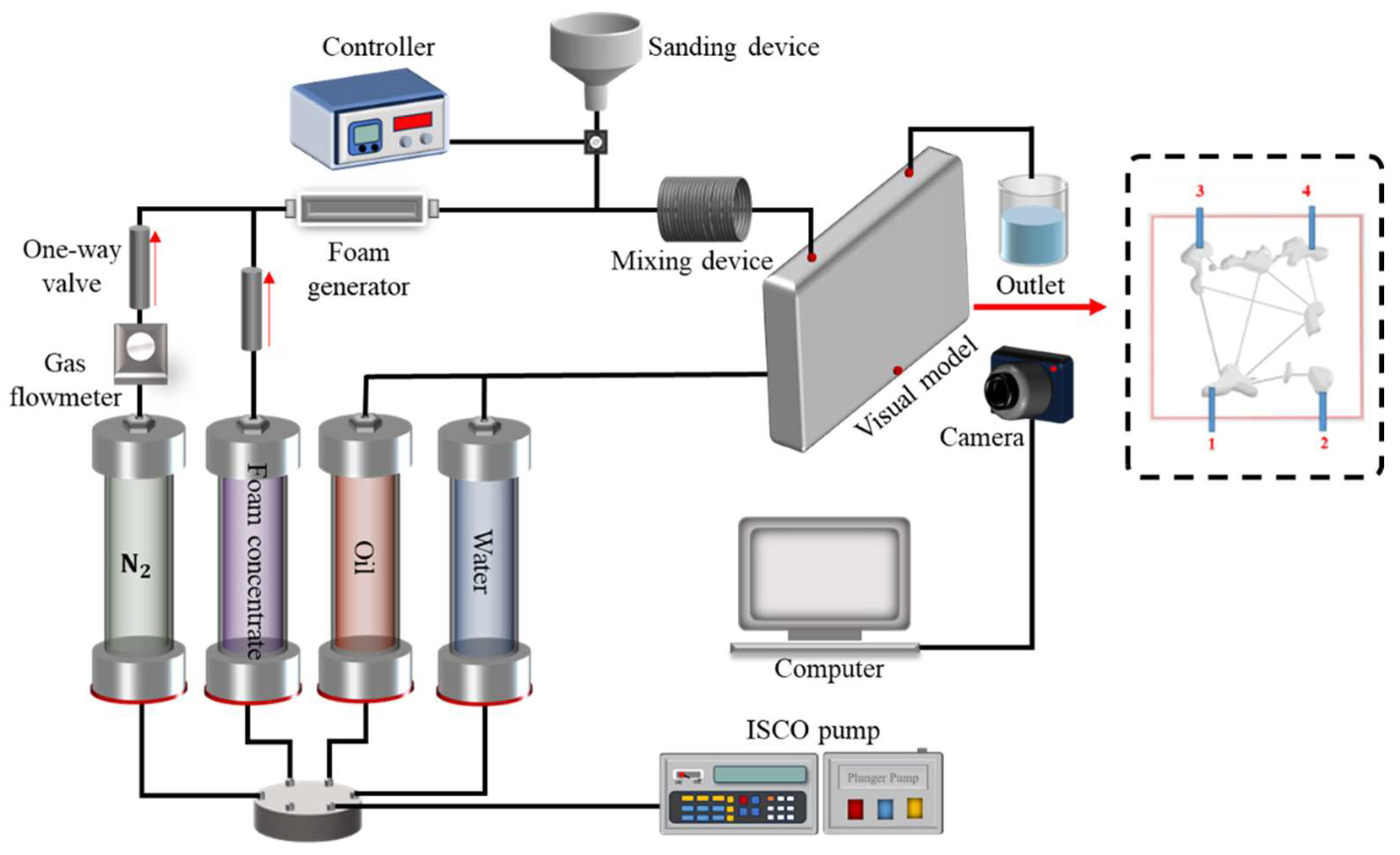

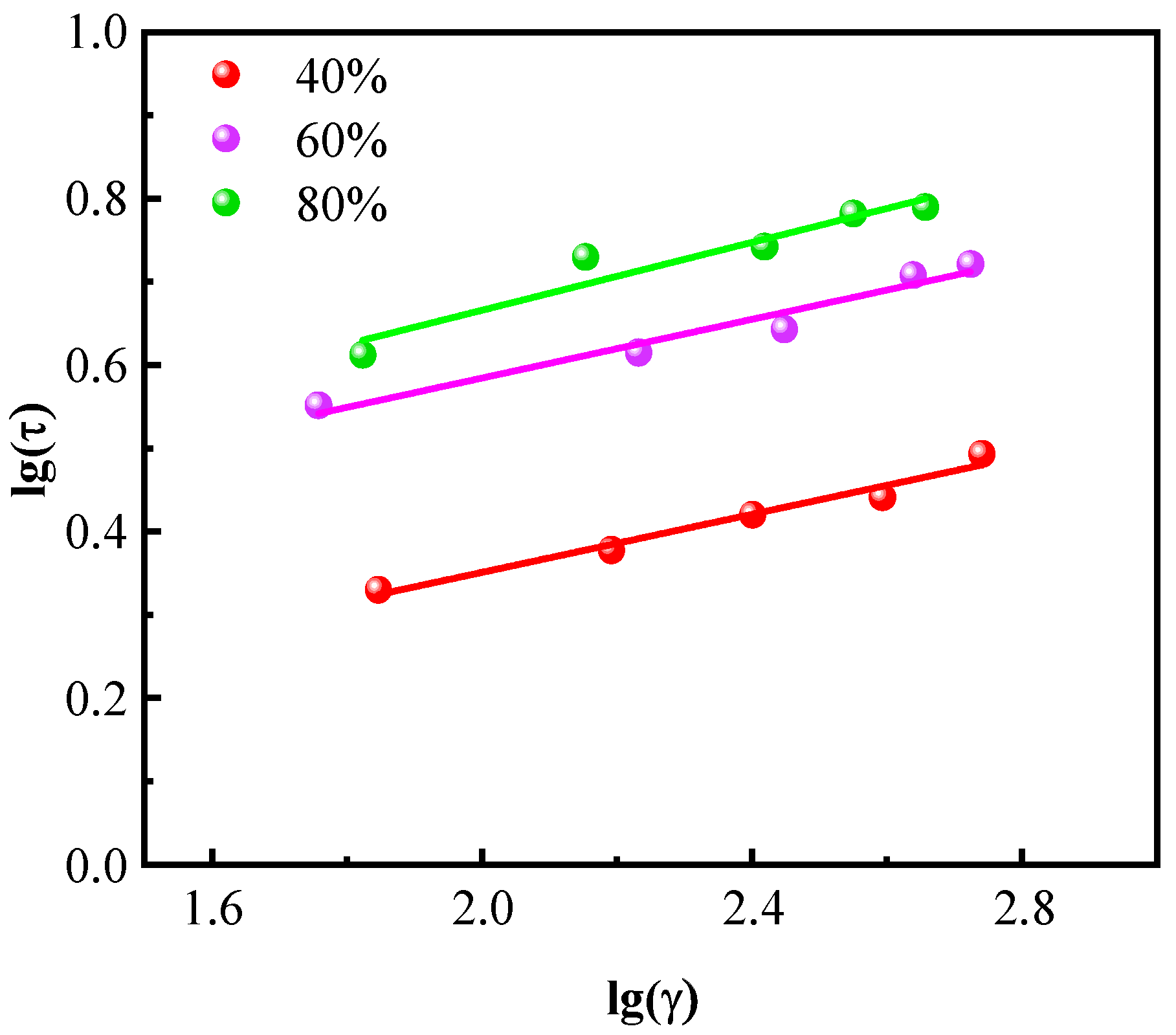

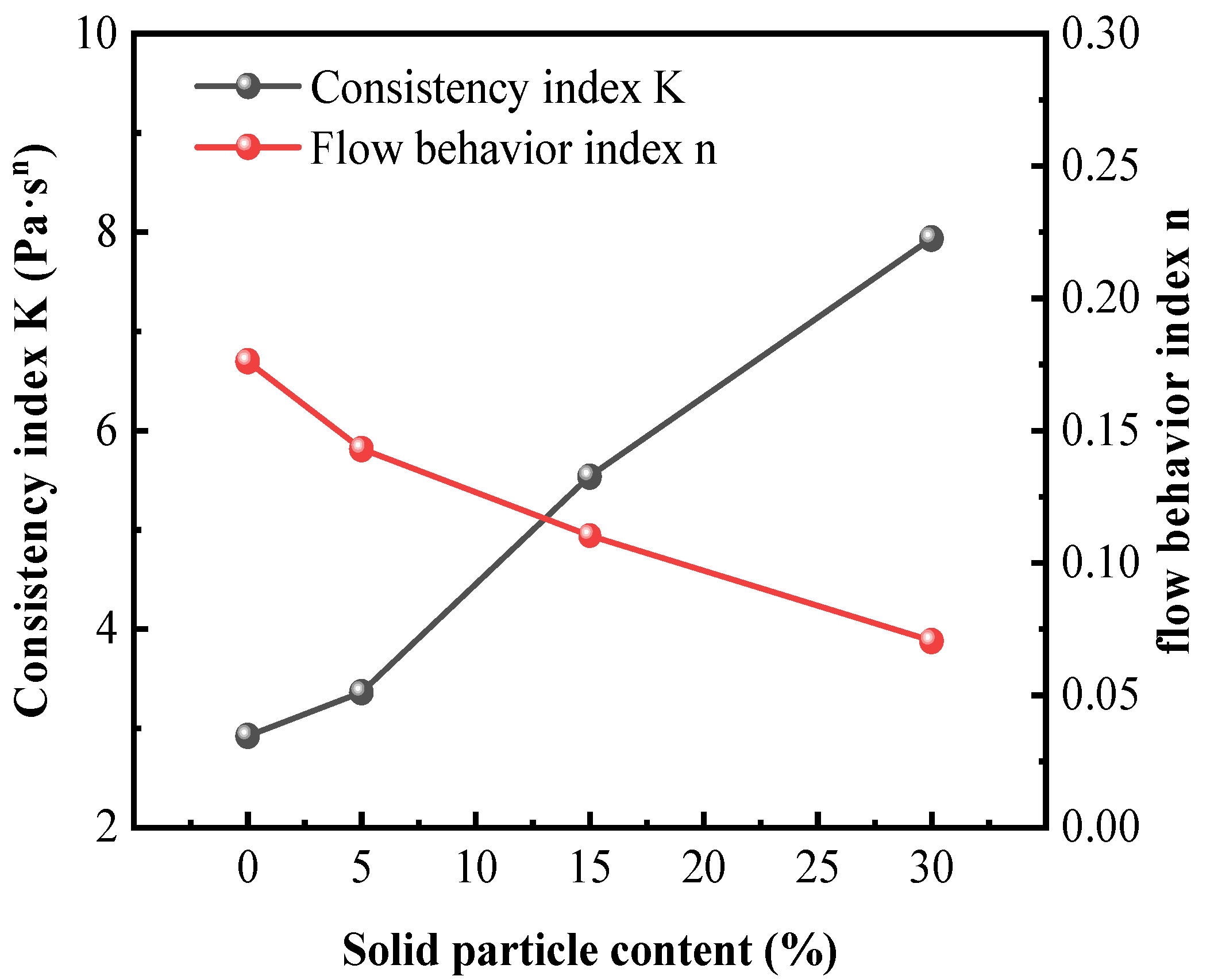
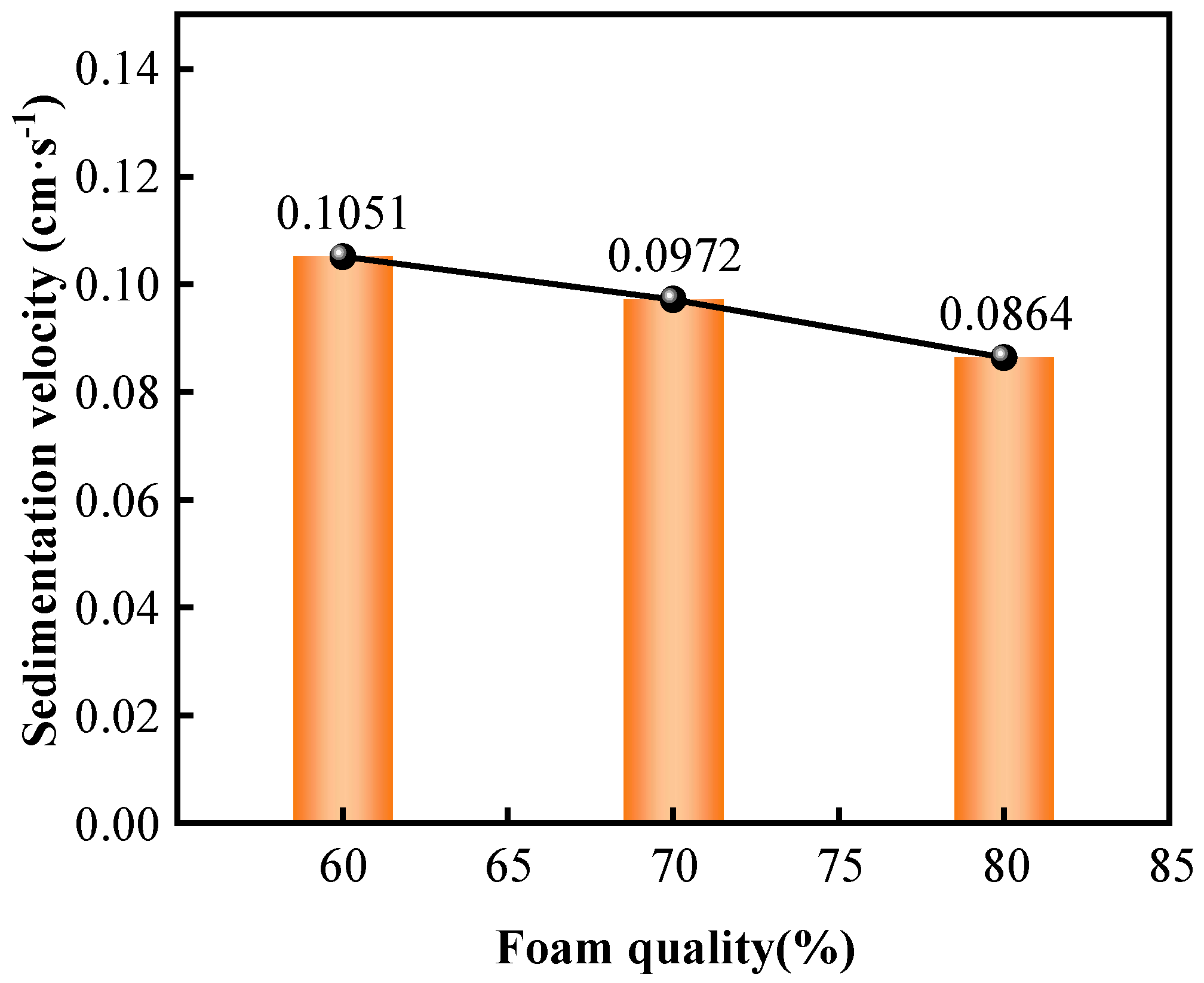
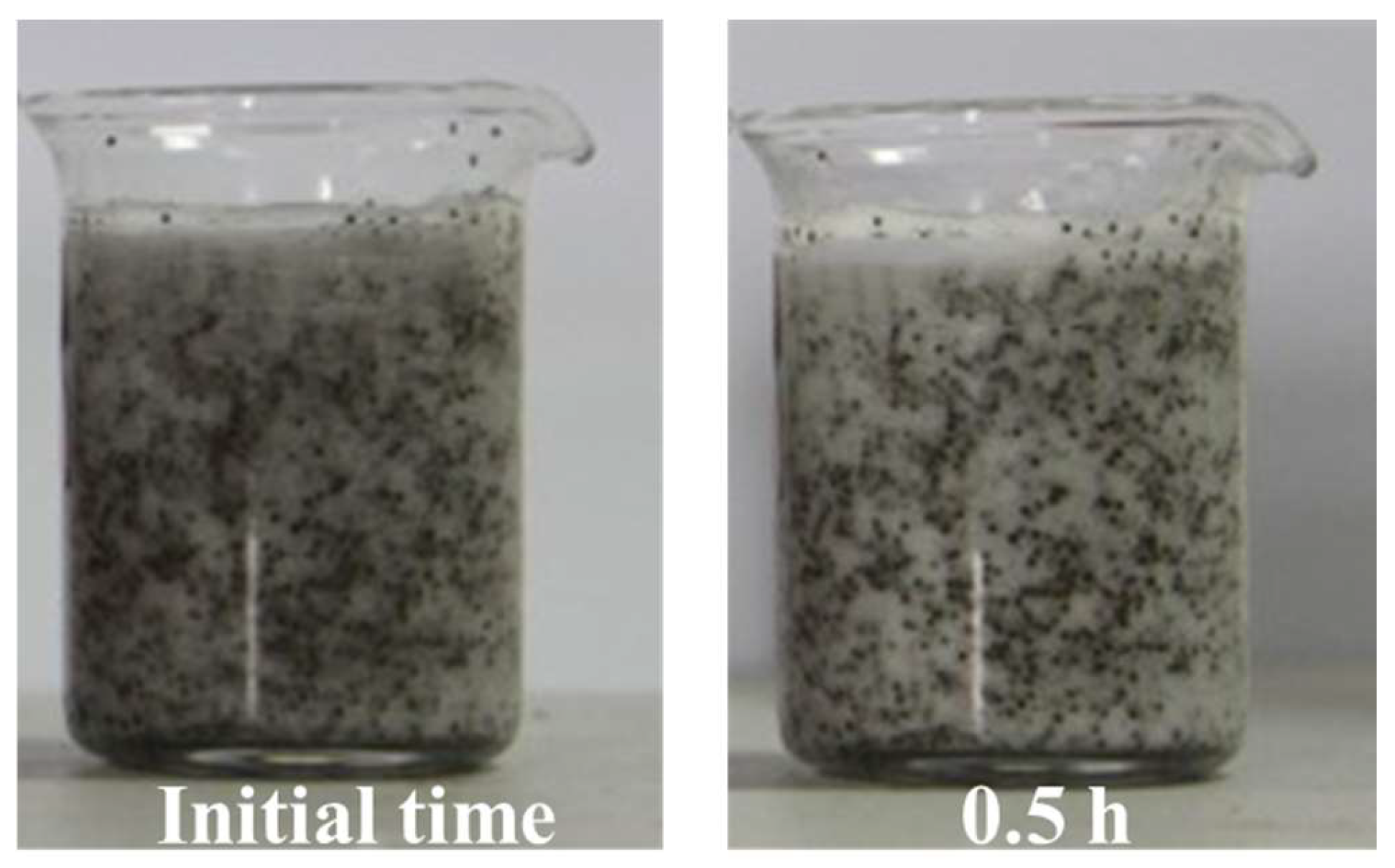
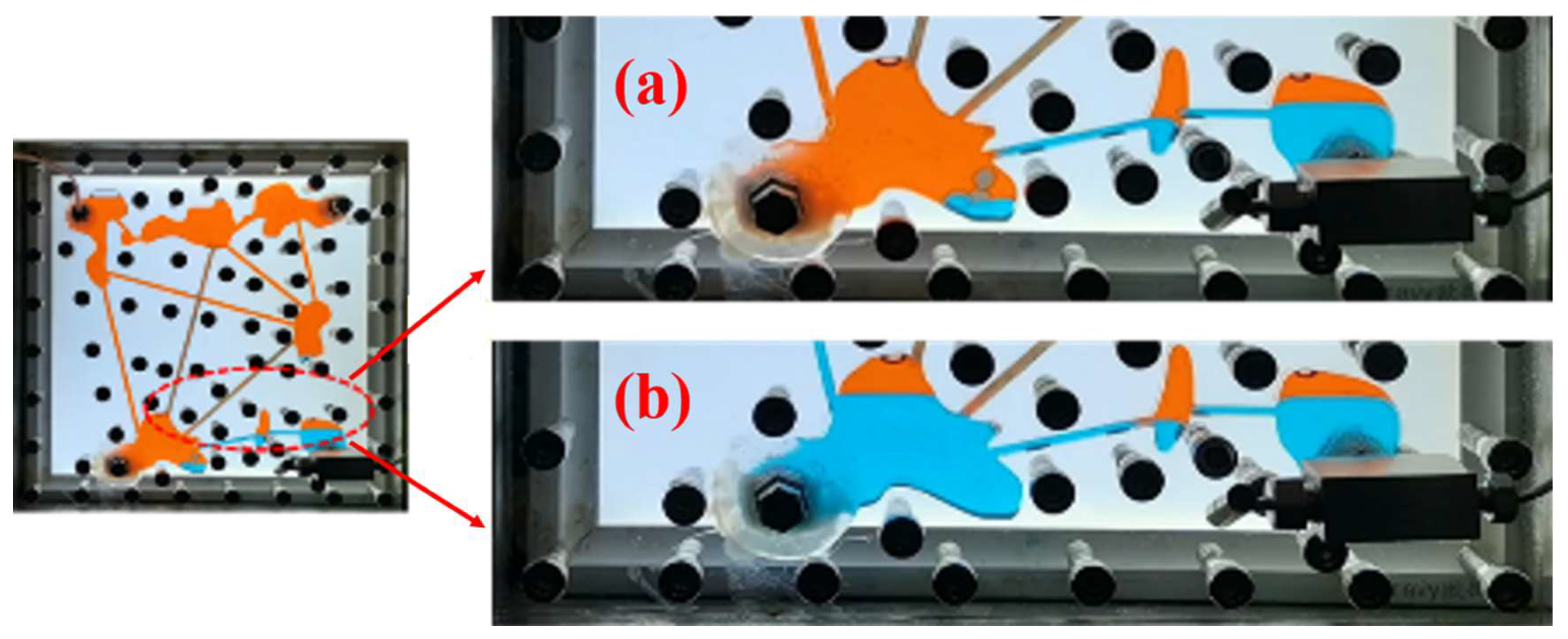
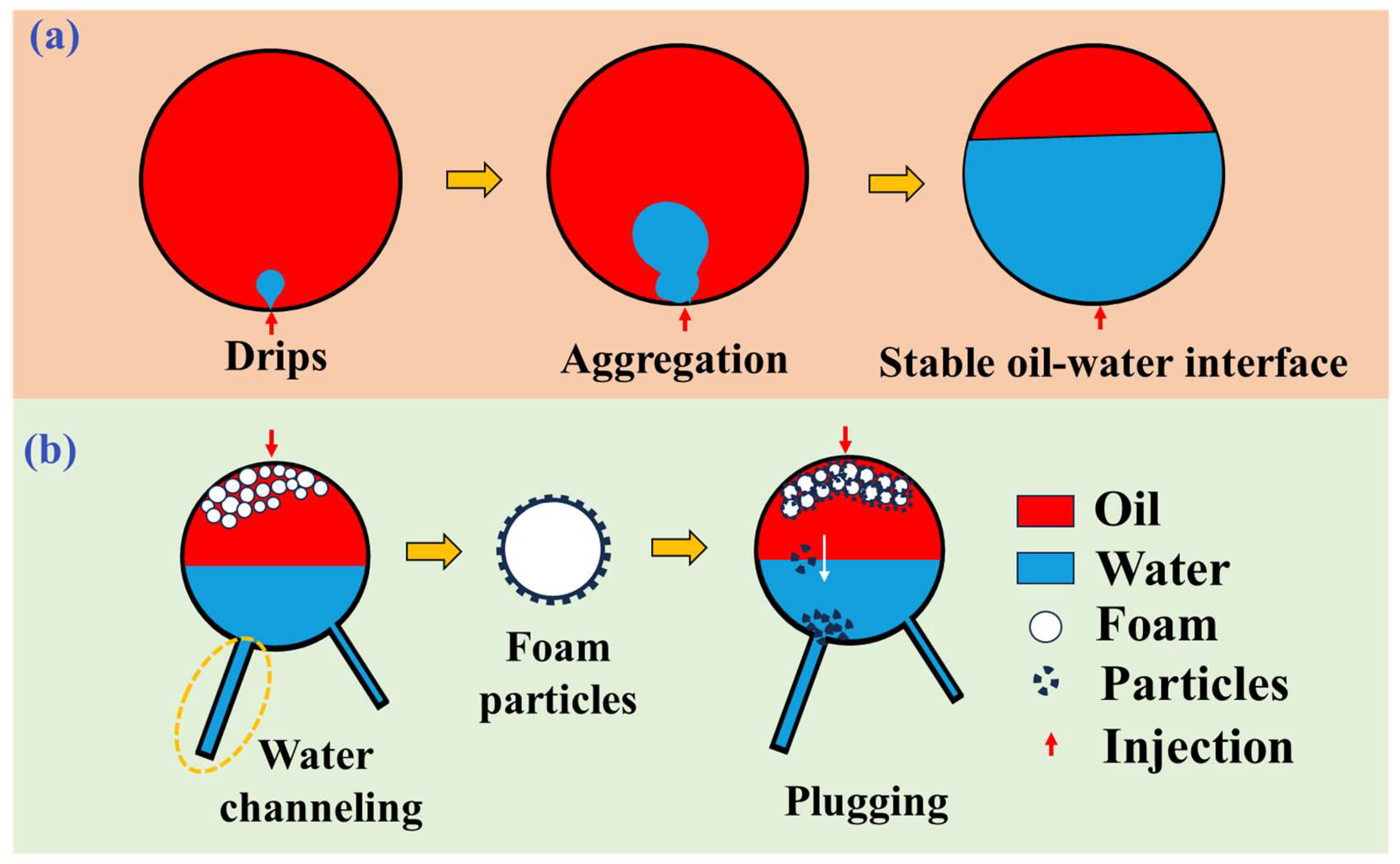

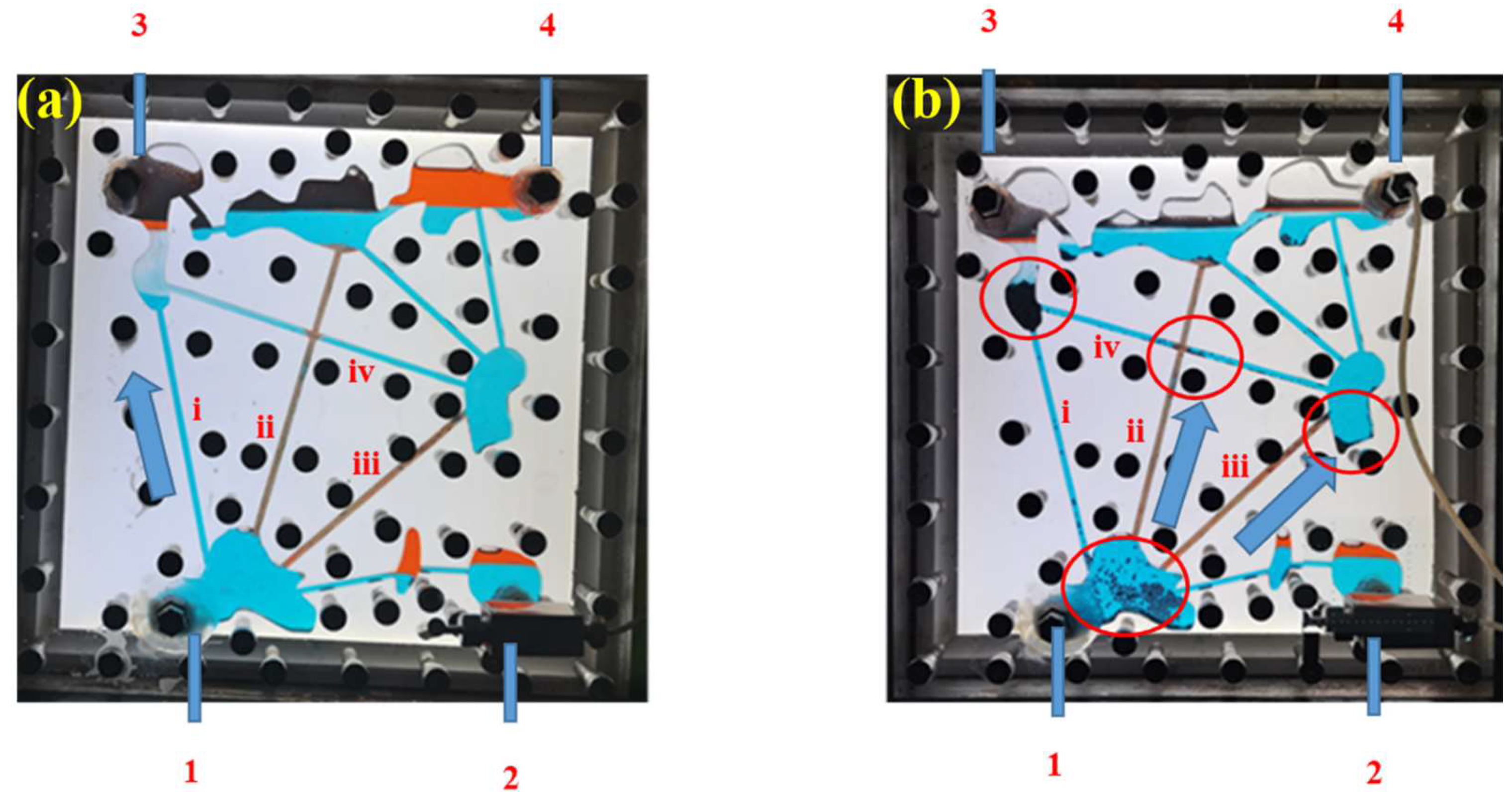
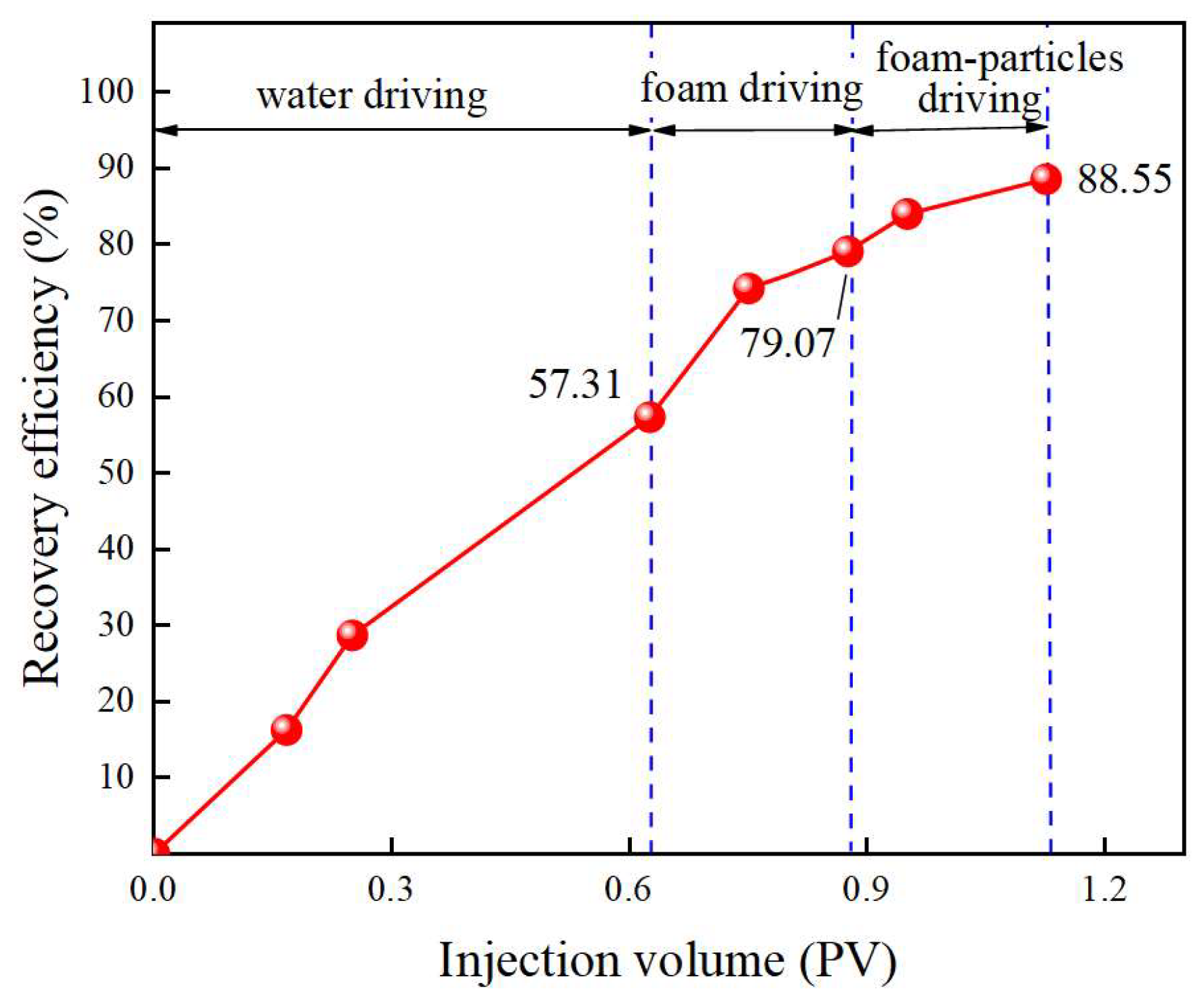
Disclaimer/Publisher’s Note: The statements, opinions and data contained in all publications are solely those of the individual author(s) and contributor(s) and not of MDPI and/or the editor(s). MDPI and/or the editor(s) disclaim responsibility for any injury to people or property resulting from any ideas, methods, instructions or products referred to in the content. |
© 2024 by the authors. Licensee MDPI, Basel, Switzerland. This article is an open access article distributed under the terms and conditions of the Creative Commons Attribution (CC BY) license (https://creativecommons.org/licenses/by/4.0/).
Share and Cite
Wang, J.; Feng, Y.; Cao, A.; Zhang, J.; Chen, D. Co-Injection of Foam and Particles: An Approach for Bottom Water Control in Fractured-Vuggy Reservoirs. Processes 2024, 12, 447. https://doi.org/10.3390/pr12030447
Wang J, Feng Y, Cao A, Zhang J, Chen D. Co-Injection of Foam and Particles: An Approach for Bottom Water Control in Fractured-Vuggy Reservoirs. Processes. 2024; 12(3):447. https://doi.org/10.3390/pr12030447
Chicago/Turabian StyleWang, Jianhai, Yibo Feng, Aiqing Cao, Jingyu Zhang, and Danqi Chen. 2024. "Co-Injection of Foam and Particles: An Approach for Bottom Water Control in Fractured-Vuggy Reservoirs" Processes 12, no. 3: 447. https://doi.org/10.3390/pr12030447



